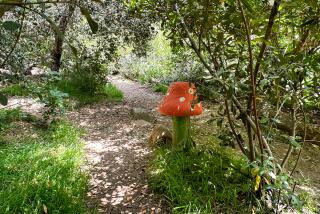Native flowers aren’t the only plants in ‘super-bloom’ this spring — nasty weeds have also flourished
Reporting from Devore, Calif. — While hundreds of thousands of Southern Californians are oohing and aahing the “super bloom” of wildflowers painting the region’s fields and hillsides, at least a few folks are ughing and arghing the dark side of recent drought-busting storms: weeds.
Along with scarlet monkey flowers, blue lupines and purple hyacinth, the rain has triggered a profusion of non-native vegetation with names like stink net.
Botanist Naomi Fraga walked along a dirt road in the southeastern San Gabriel Mountains on a recent weekday, scanning carpets of weeds trying to rob water and sunlight from the wildflowers.
“It’s kind of sad,” said Fraga, 37, director of conservation programs at Rancho Santa Ana Botanic Garden in Claremont. “The rains we’d all been praying for stimulated a spectacular bloom of poppies and peonies — and a crush of alien vegetation to match.”
Fraga leads a team of botanists helping the U.S. Forest Service map and remove botanical invaders that are crowding out native wildflowers, grasses and shrubs collectively known as chaparral in the Cajon Pass area, where ecological cycles were dramatically altered by five years of drought and last year’s devastating Blue Cut fire.
The message contained in her field notes was grim: Most of the 19 species of invasive mustard, grass and fern-like filarees in the area were bearing fruit and going to seed.
The rains we’d all been praying for stimulated a spectacular bloom of poppies and peonies — and a crush of alien vegetation to match.
— Botanist Naomi Fraga
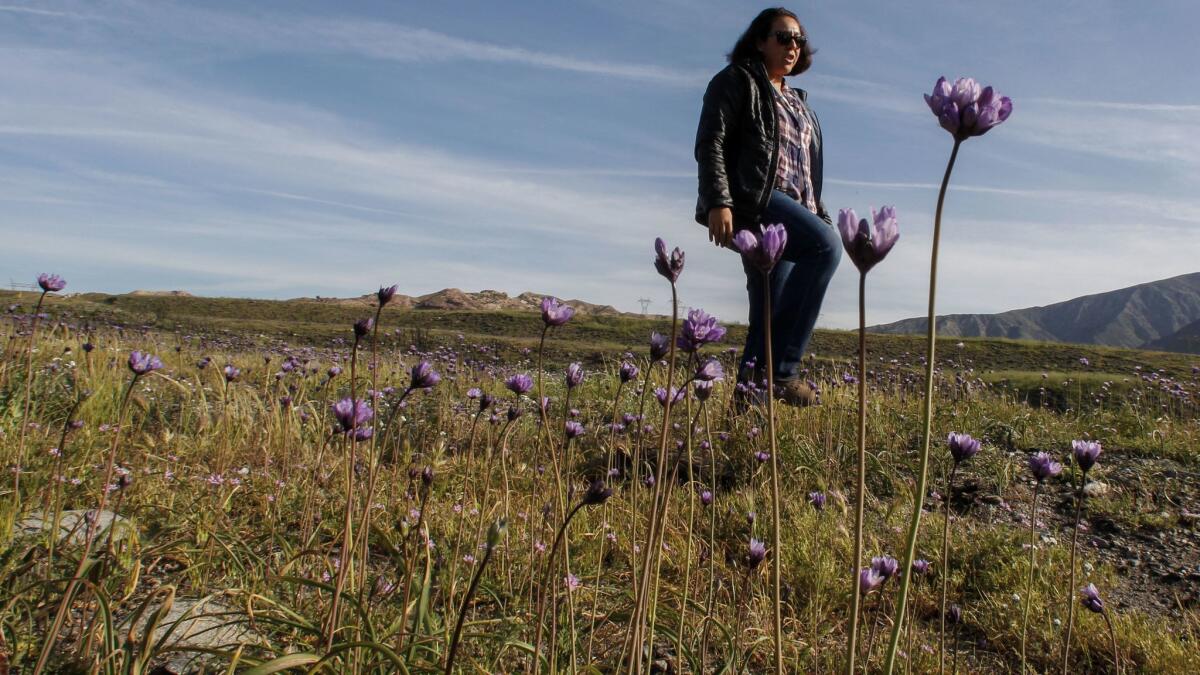
“We’ll never get all the weeds out of here — there’s just too many,” she said. “So, our goal is to target certain areas, then have crews get in there with work gloves and shovels to try and tip the scales in favor of plants that evolved here.”
The same could be said for most of Southern California as it shifts from one of the wettest winters on record into spring with a 50-50 chance that an El Niño condition will send more storms into the state at year’s end, according to a recent National Weather Service analysis.
“This year’s record rainfall only set the stage for the seeds dropped by new weeds,” said Andrew Sanders, curator at UC Riverside’s herbarium. “If we have another wet winter, invasive grasses will go berserk and flowers will be harder to find.”
ALSO: Exploring the magic and mystery of mushrooms with the L.A. Mycological Society »
The Lake Perris Recreation Area, between the cities of Perris and Moreno Valley in Riverside County, has been taken over by stink net, a highly aggressive weed that first popped up there in 1982.
“The trouble with stink net is that it produces tiny sticky seeds that launch new populations every time it rains,” said Ken Kietzer, a conservationist at Lake Perris. “It’s hard to come up with an effective treatment when there are six to eight generations spreading simultaneously across the grasslands, sage scrub, slopes, valleys, shoreline and campgrounds.”
“And a recent survey suggested that our federally endangered Stephens’ kangaroo rats are underweight,” he added, “because they’ve been eating the seeds that stink net puts out.”
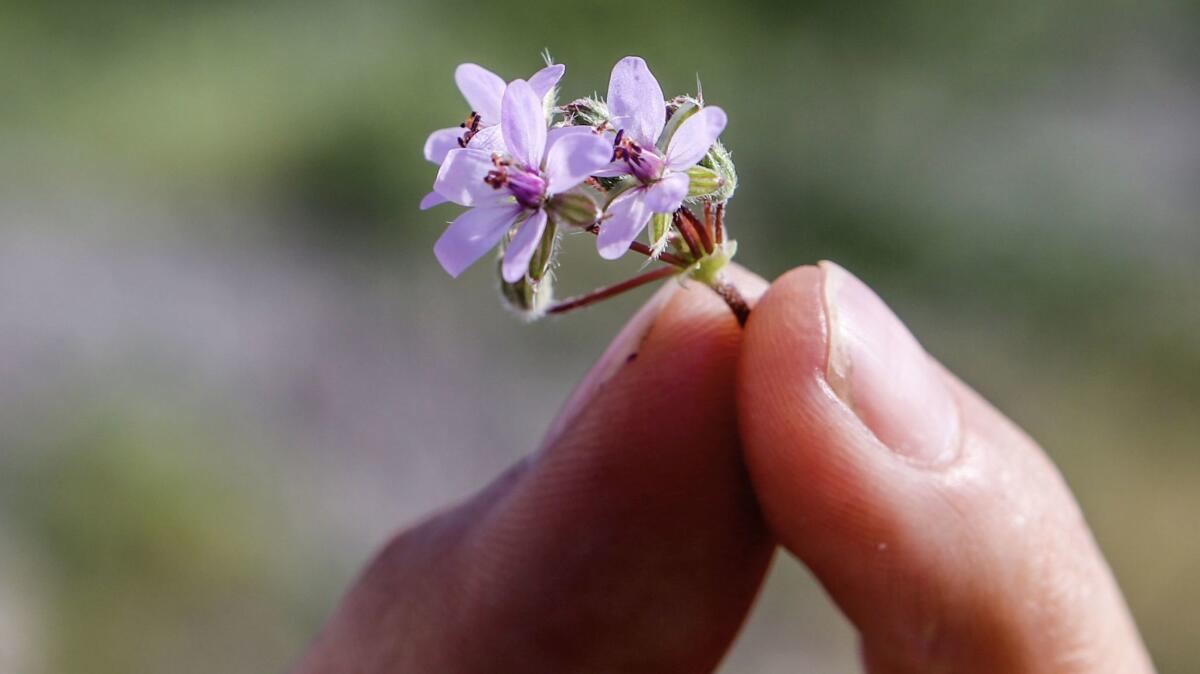
Further east in the Mojave Desert, patchy rainfall combined with nitrogen-laden smog wafting in from Los Angeles has nurtured expanses of Mediterranean split grass. The low nutritional quality of those invasives may be linked to reports of malnourished desert tortoises, scientists say.
“Tortoises, which thrive on wildflowers, lose weight when they eat nonnative grasses,” said Kristin Berry, a biologist and expert on the lumbering reptiles. “That’s because exotic grasses are fibrous and don’t offer much nutrition.”
Some of the same grasses, the seeds of which arrived on the hoofs of European cattle in the 1800s, have bristling tips called foxtails, which scientists say can blind and ultimately kill raptors that get them in their eyes diving into fields after small rodents.
At Ballona Wetlands, a 600-acre preserve near Culver City and just north of Los Angeles International Airport, native buckwheat plants that sustain a colony of federally endangered El Segundo blue butterflies have been overwhelmed by tall, lush stands of terracina spurge and garland chrysanthemum.
Friends of Ballona Wetlands, a nonprofit dedicated to protecting and restoring the preserve nourished by natural tidal action and periodic infusions of urban runoff, sounded the alarm in an urgent letter to volunteers.
It read, in part: “Heavy winter rains were a blessing for California flowers, but the nonnative weeds loved them too! Help us pull them out of Ballona before they seed and spread.”
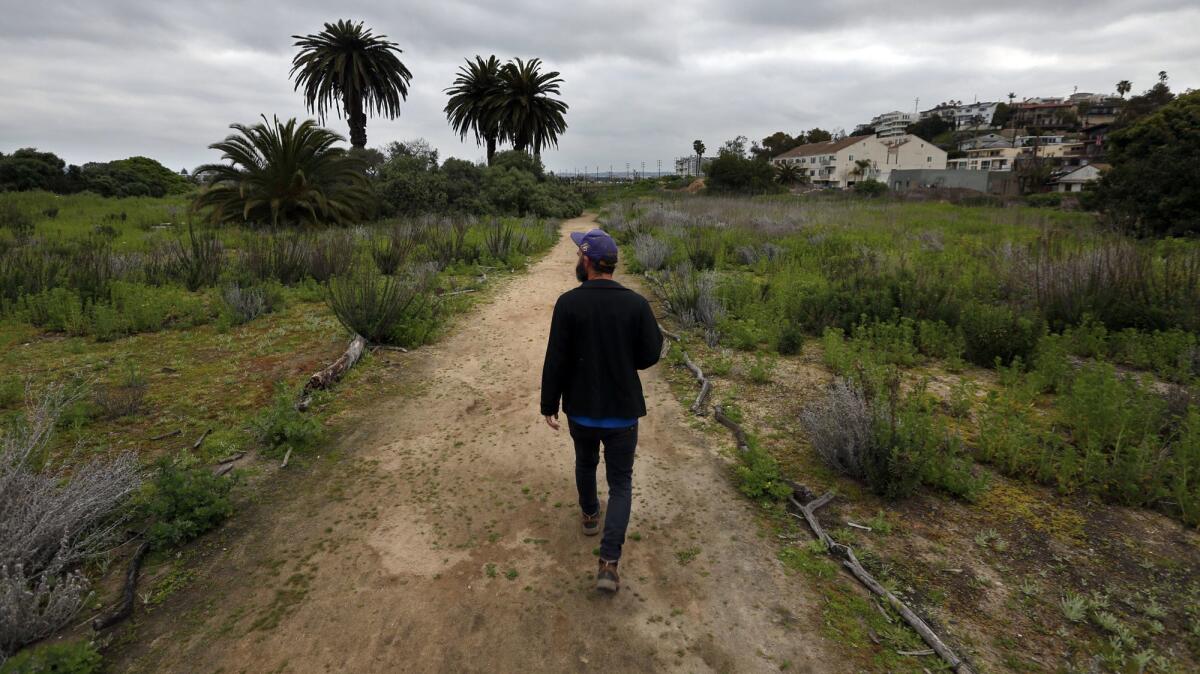
On Monday, Patrick Tyrell, chief botanist for the preserve, took stock of the challenge.
“State permit requirements prohibit the use of mechanical tools for weed control here,” he said. “So our crews will be pulling weeds by hand until the El Segundo blues return to the buckwheat for nectar in June.”
Sandra DeSimone, a plant ecologist and director of research and education at Orange County’s Audubon Starr Ranch Sanctuary, a land of rugged mountains and rolling coastal bluffs, grasslands and riparian canyons, isn’t so sure that some weeds are all that bad.
She has been raising eyebrows in the environmental community by promoting “hybrid ecosystems” that tolerate some nonnative grasses as a means of coping with the botanical fluctuations wrought by wetter winters, hotter summers and periods of drought due to global climate change.
“Want to see one of our experimental hybrid plots?” DeSimone asked a visitor. “Hop in the truck.”
At the base of a steep mountain, she gunned the engine. “Here, nonnative grasses are our friends,” she said, as the vehicle squirmed up a rocky, narrow and steep dirt road in one of the most remote and rugged reaches of the sanctuary.
On the mountain’s ridgeline, she reached out with her hands to embrace the vista of a 20-acre, Irish-green field of both exotic and native grasses. “As long as our songbirds and small mammals are fine with this, we’re OK with it, too,” she said with a smile. “So far, so good.”
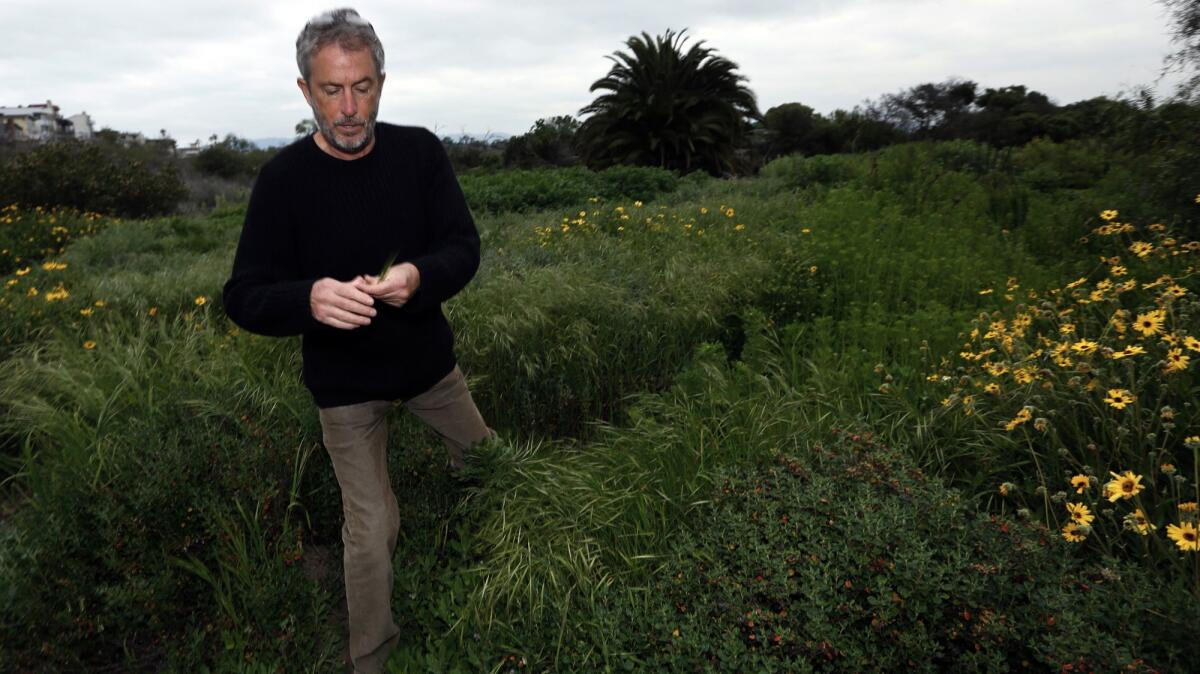
Over in the Cajon Pass, however, Fraga had her mind made up: “First to go will be the mustard plants growing up along roadsides, where their seeds can be picked up by vehicle tires and hiking boots and transported to other areas where they are not wanted.”
Fraga could not resist stopping to uproot one of the invaders with spindly stems tipped with bulging seed pods. Holding it up, she said: “This is Sahara mustard, a real bad guy that hitched a ride to the southwestern United States with imported date palms.”
“We have to act fast,” she added, tossing the weed aside. “A few more months and it’ll be too late.”
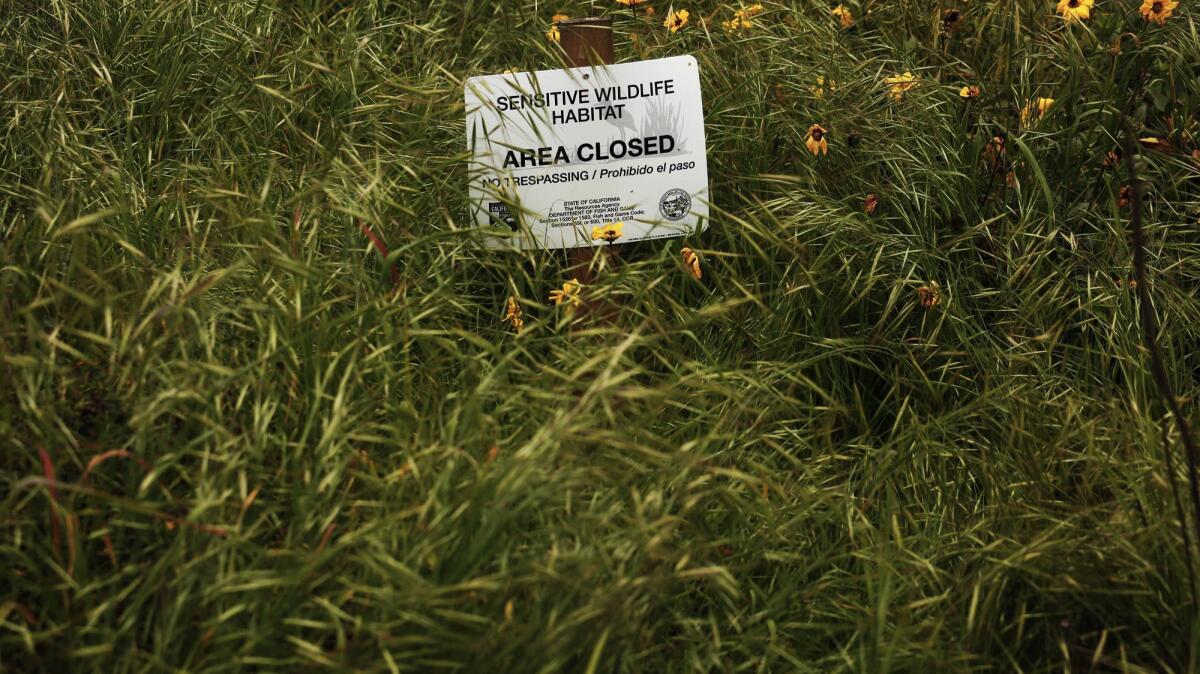
PHOTOS | Super Bloom at Anza Borrego »
Twitter: @LouisSahagun
More to Read
Sign up for Essential California
The most important California stories and recommendations in your inbox every morning.
You may occasionally receive promotional content from the Los Angeles Times.


